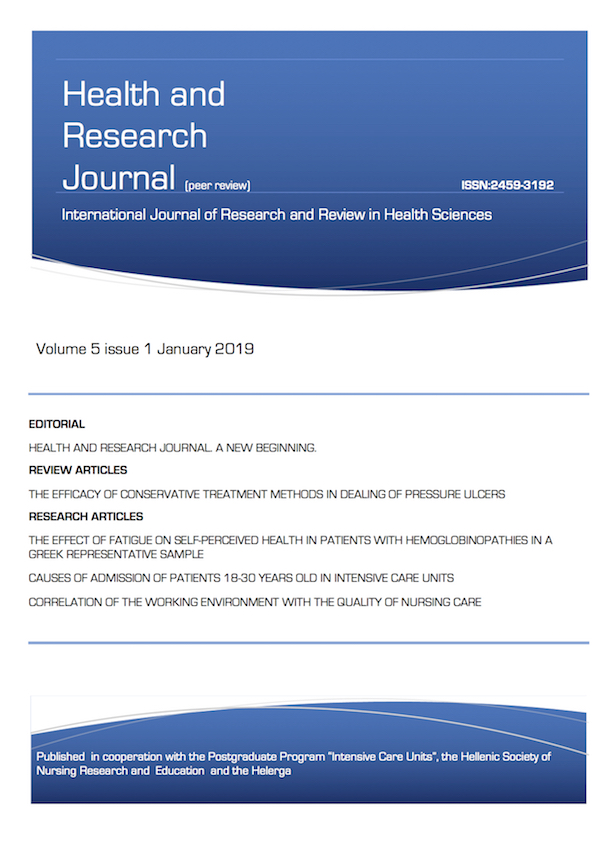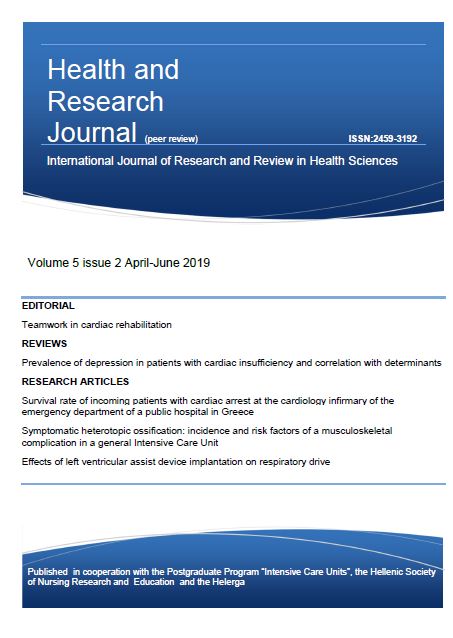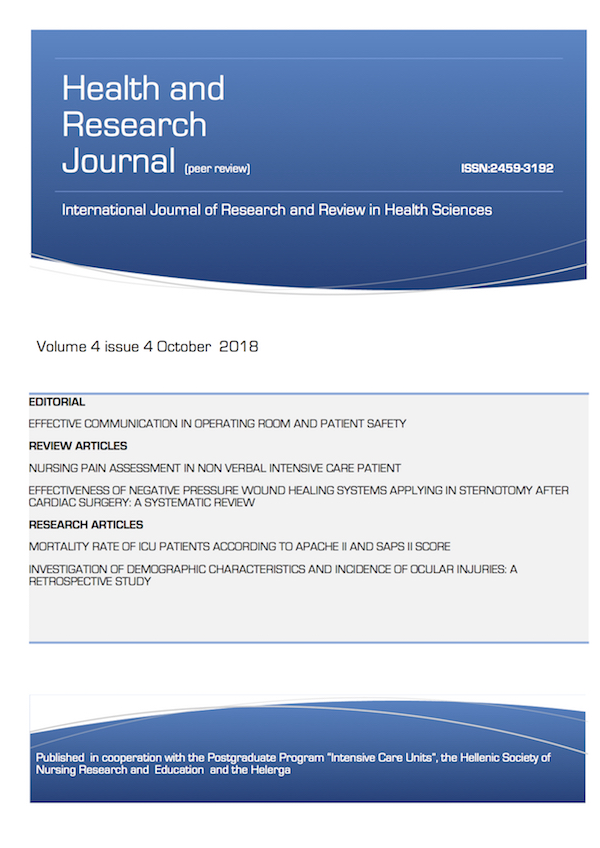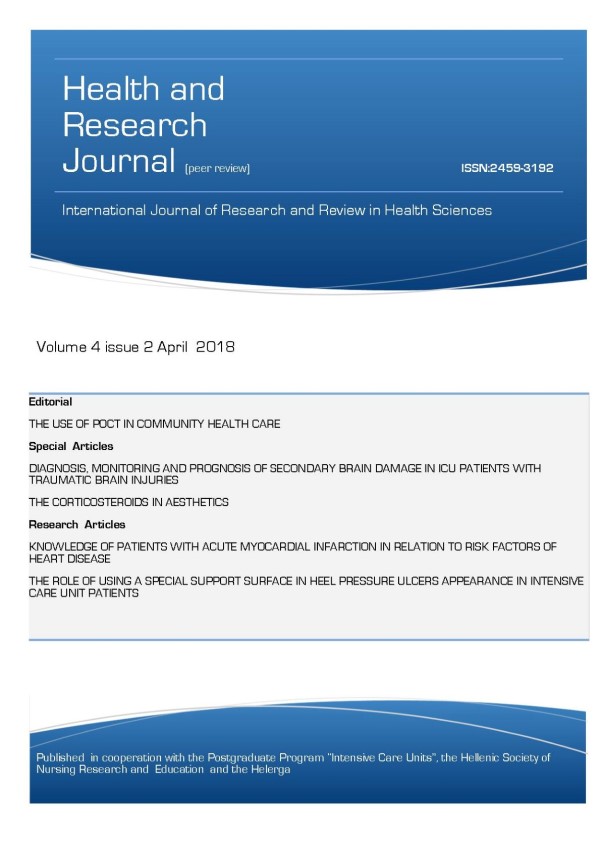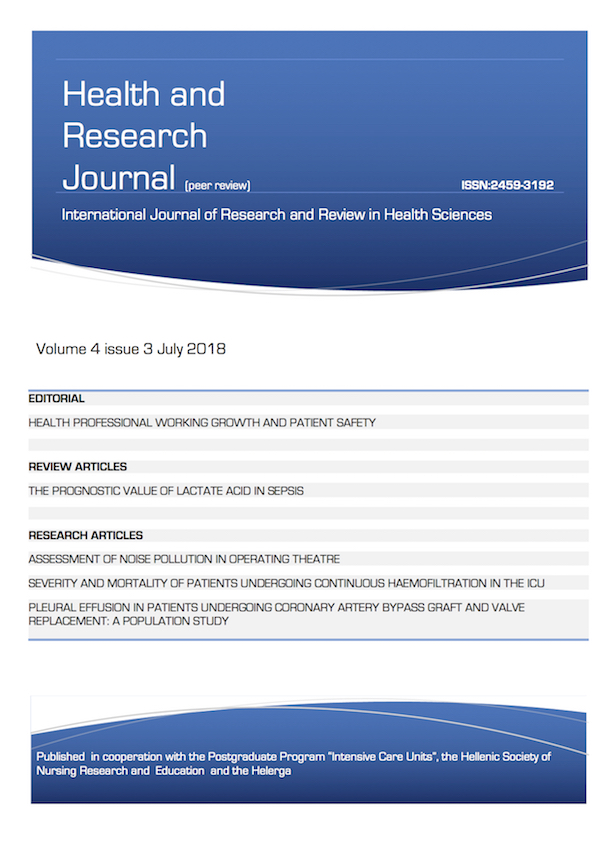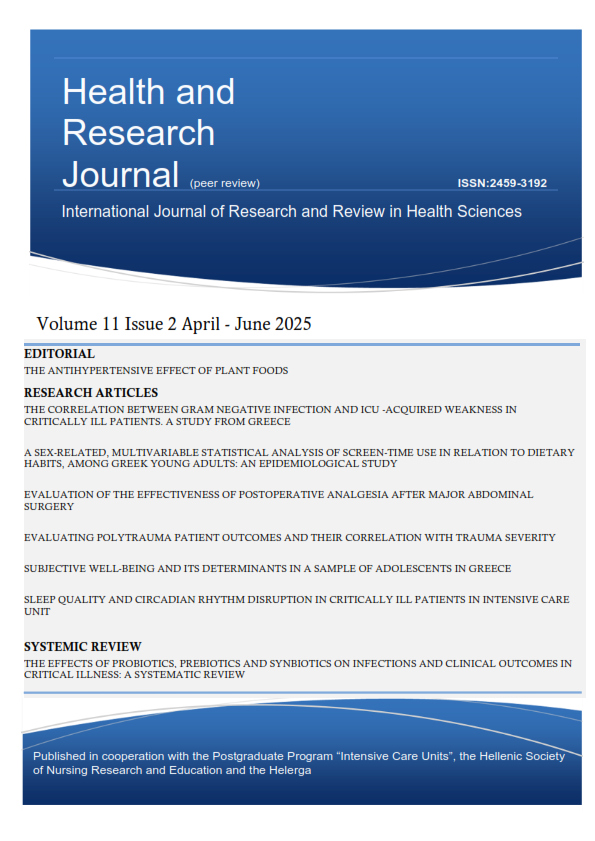Musculoskeletal pain management in the Emergency Department
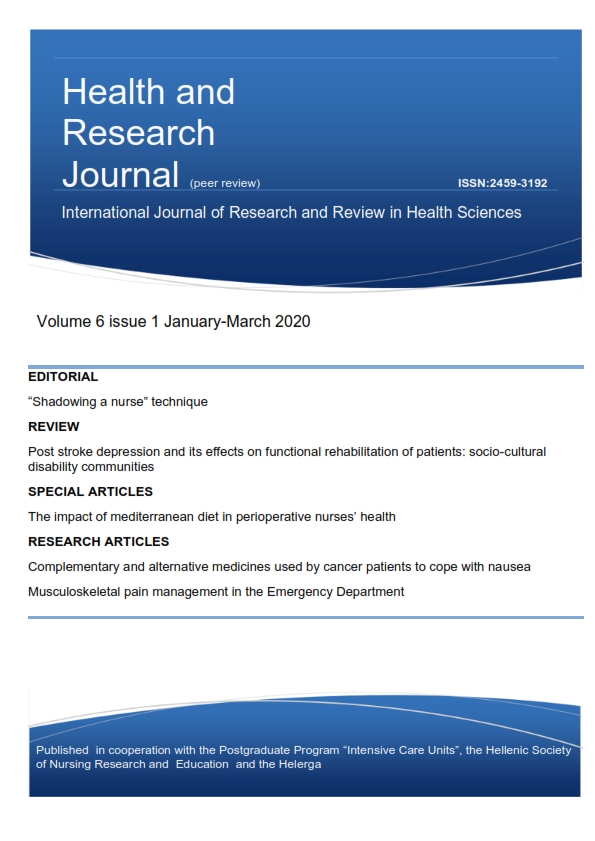
Abstract
Introduction: The intensity of acute musculoskeletal pain is underestimated by health providers. Analgesia in adults that receive treatment for acute musculoskeletal pain varies from 11-29%. The timely and effective treatment of pain should become priority for the adequate pain management.
Aim: The aim of the present study was to explore musculoskeletal pain management in the emergency department (ED).
Material and Method: This is a descriptive study. The studied sample consisted of 82 patients, who admitted in the ED of Athen’s general hospital, due to acute musculoskeletal pain. For data collection, a special designed registration form was used. Related measurements were completed at two time points; the first time point was during patients’ admission to ED and the second one, 30 minutes post treatment or post ED discharge.
Results: Patients average pain score was 7.25 ± 1.85 (first time point) and 3.76 ± 2.66 (second time point). Analgesia was provided to 51.2% of the sample and non-invasive methods were used in 51.2%. As for the frequency of the administrated drugs, analgesics were mostly preferred (29.3%), nonsteroidal anti-inflammatory drugs (NSAIDs) at 25.6% and opioids were used only at 9.8%. The mean time to first anministrated analgesic therapy was 16.56 ± 32.89 min.
Conclusions: In spite of the extensive research and international guidelines for pain management, the fulfillment of the patients’ expectations for adequate and timely relief remains a challenge. The key for successful pain management lies to further education of medical stuff.
Article Details
- How to Cite
-
Seremeti, K., Vasilopoulos, G., Toylia, G., Kadda, O., Sapountzis, I., Kourousi, E., Karimali, D., Kalogianni, A., & Rozis, M. (2020). Musculoskeletal pain management in the Emergency Department. Health & Research Journal, 6(1), 36–46. https://doi.org/10.12681/healthresj.23061
- Section
- Original Articles
Copyright notice:
The journal "Health and Research Journal" reserves the rights for copyright of the content of the website and also the copyright of the articles published.
By virtue of their appearance in this journal, the articles are free to be used for non-commercial purposes. However, the articles cannot and must not be used in anyway, published elsewhere or modified without any reference to the author and the first publication of the article.



